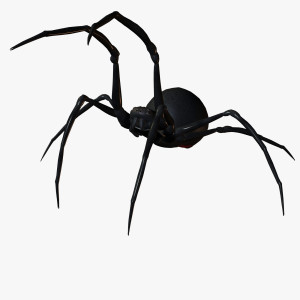 Most of the spiders we find here in our Sacramento pest control region are not capable of severely injuring we humans. But our area does host one of the most dangerous spiders in North America, the black widow, or Latrodectus hesperus.
Most of the spiders we find here in our Sacramento pest control region are not capable of severely injuring we humans. But our area does host one of the most dangerous spiders in North America, the black widow, or Latrodectus hesperus.
With the rain gone and warm summer weather finally here, many of us will be tackling neglected yards and gardens. Take care where you stick your hands. Black widow spiders are most commonly found outdoors, in nooks and corners of your yard that haven’t been disturbed for a while. Black widow spiders often build their webs in wood or rock piles, culverts, meter boxes, crawl spaces and sheds, but may move into basements or garages where undisturbed clutter gives them a sense of security. It’s always a good idea to wear long sleeves and gloves when you start cleaning out your tool shed or clearing a corner of your yard the first time of the season.
Only adult female or large juvenile female black widows have mouth parts large enough to harm humans. The adult female black widow usually has a shiny black body, with a large spherical abdomen, and long black legs. She is distinctively marked with a red or orange hourglass on the underside of her abdomen, so you may not see it if she is running away from you. If you catch her on her web, you may spot the hourglass, since she typically hangs upside down from the underside of the web.
Although the male black widow spider also is venomous, he is significantly smaller than the female, and his mouth parts are not large enough to injure humans. His coloration is pale green-gray with lighter markings. He also has a yellow or orangish hourglass on his underside, but its shape is broader in the middle. The old myth that the female black widow eats the male after mating is usually not true, but she may do so if she is hungry.
Young female black widows are colored much like the male but grow darker and shinier in stages as they shed their skin. Baby black widows, too tiny to bite, are pale or white in color and scatter in all directions when their nest is disturbed.
Although black widow bites are seldom fatal to humans, they can cause a serious reaction, with young children and the elderly most at risk. Symptoms, which may range from mild to severe, include pain that spreads from the bite site to other parts of the body, muscular spasms, sweating, fever, increased blood pressure, difficult breathing and speaking, restlessness and nausea. Irritation at the bite site may be limited to redness and swelling. Symptoms usually peak within a day of the bite and improve over the next two to three days. Black widow bites are fairly common in California. Seek medical advice immediately if you or a family member is bitten, and have someone trap the spider for identification if possible to do so safely.
While spiders—even black widows—serve beneficial purposes in our eco-system, when they move into our homes or infest areas where our children play, intervention is needed. Call our trained pest control professionals at 916-457-7605 or e-mail [email protected] if you need help identifying spiders in or around your home, or to learn about our environmentally friendly pest management services.

